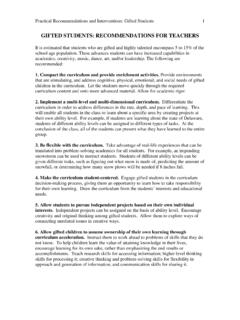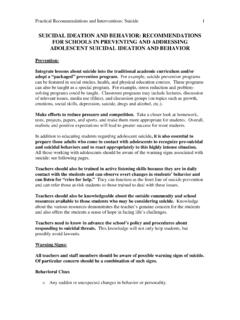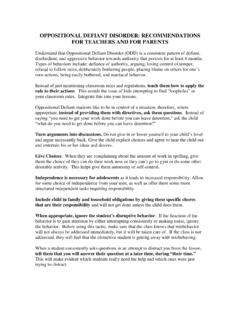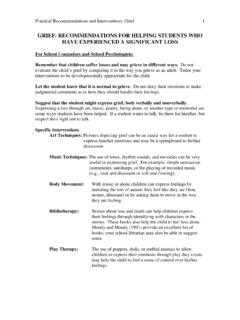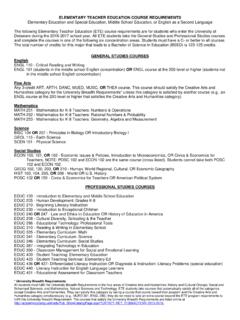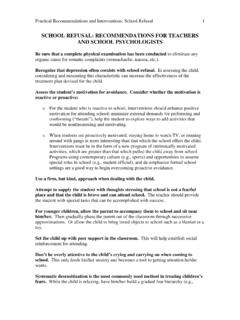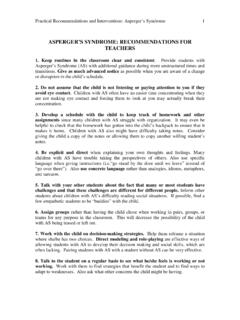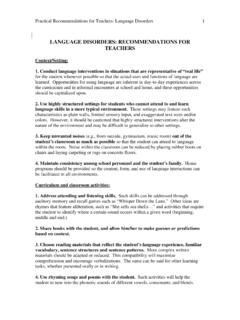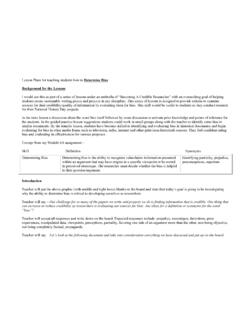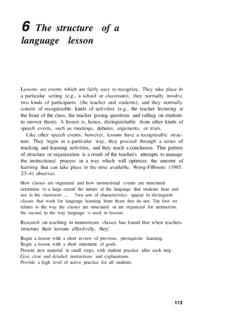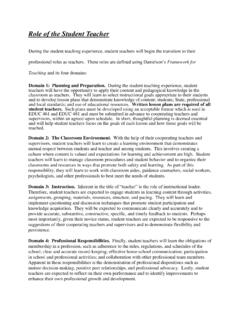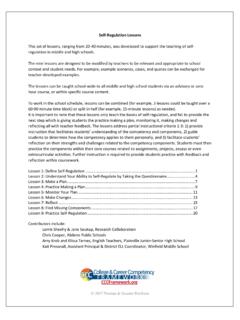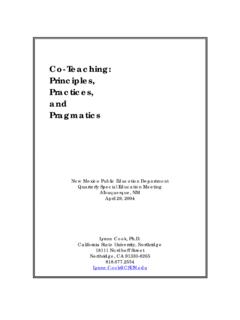Transcription of LESSON PLAN FORMAT AND EXPLANATION - School of …
1 LESSON PLAN FORMAT AND EXPLANATION Name Date Grade Subject # in Group School Time 1. STUDENT CHARACTERISTICS AND PRIOR KNOWLEDGE: Information or special needs of students that might impact this LESSON Consider language proficiency, skill level, exceptionalities, learning styles, behavior, physical limitations, or any other characteristic that is related to this LESSON . Only include characteristics directly related to this LESSON . This organizer should be more than a behavior chart. Student(s) Characteristic(s) Accommodation(s) Use first names only. Prior knowledge including students oral and written academic language that is needed to successfully complete and understand this LESSON .
2 2. STATEMENT OF STANDARD(S): STANDARDS List state-adopted student academic content standards that are the target of student learning. 3. CONTENT FOCUS: Identify the concepts, content, and language demands embedded in the LESSON . Be sure to address relevant genres, key vocabulary or phrases for the concepts or skills being taught and linguistic features ( , vocabulary patterns, connector words, grammatical structures, or text organization strategies) that enable students to understand or produce the oral and/or written texts in the LESSON . Consider how you will help students make connections between and among prior and new skills and strategies (investigate prior and future grade level expectations).
3 4. ESSENTIAL QUESTION, LESSON OBJECTIVE(S), & ASSESSMENT(S): ESSENTIAL QUESTION: Identify a question that summarizes the content focus/big idea of this LESSON . OBJECTIVE(S): Explain what the students will know and be able to do by the conclusion of the LESSON . Learning objectives for both content AND academic language should be identified. This should not be the activity that they will be completing, but the learning they will be demonstrating during your activity. Present objectives in terms of observable LESSON outcomes. ASSESSMENT(S): Assessment is an ongoing activity and can be done during any part of the LESSON . Assessment should be stated in your procedures. Explain how you will determine that the students have learned what you intended to teach them.
4 Select a systematic means of assessment that is aligned with the objectives to analyze and document student progress. Can be conducted in both formal and informal ways. How will you document your assessment? When observing, listening, and/or taking notes, identify the criteria that indicates progress/mastery. Consider how results will impact your instruction. Use the organizer below: Essential Question: Objective(s) Assessment Tool (s) How will you determine which students are progressing toward learning key knowledge, skills, and abilities targeted in the LESSON ? 5. RESOURCES AND MATERIALS List all of the resources (including electronic citations) and materials that you will need for the LESSON .
5 Identify specific materials used to accommodate individual differences. Copies of all handouts, overheads, and assessments must be included with all plans. 6. INSTRUCTIONAL STRATEGIES AND LEARNING TASKS Sequence the key learning tasks for daily instruction. o Consider how you will build connections from prior knowledge to new knowledge. o Include how you will help students make connections o Identify the language demands embedded in the LESSON . o Consider how you will help students at different academic and language proficiency levels develop this academic language. Consider how you will support students with specific learning needs. Activating Strategies may include: Capture students interest; hook.
6 Review prior knowledge. Tell students what it is they are expected to know or be able to do ( Today we ) Introduce the LESSON . Communicate the purpose of the LESSON . * Homework checks, attendance and other housekeeping duties do not constitute an opening. Teaching Strategies may include: Present content, skills, and strategies. Describe the selected teaching methods, instructional procedures, and learning activities which are appropriate for the students and that are aligned with the objective(s). Model the skill or strategy. (Go through the process and explain what is expected.) Check for understanding. Provide guided practice. (Use strategies to insure that students practice desired behavior; teacher is readily available; teacher should be monitoring groups and providing feedback.)
7 Include critical questions that you will ask. Summarizing Strategies (Closure) may include: Engage students in summarizing main points or big ideas of LESSON . Revisit objective/essential question.
